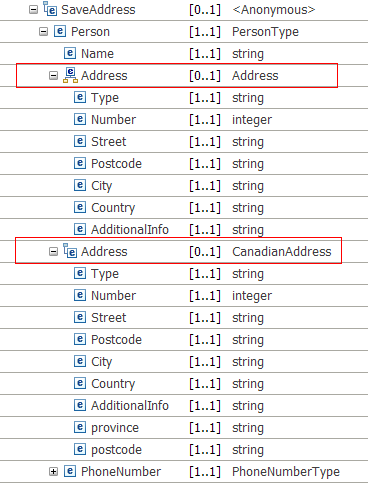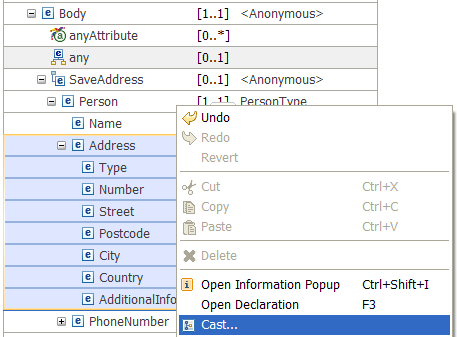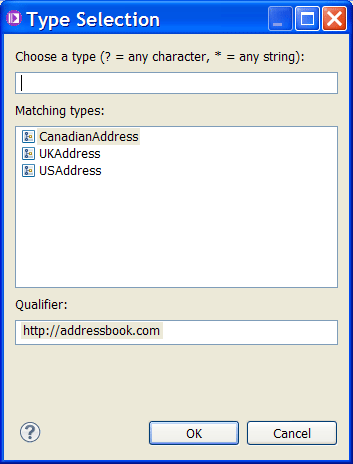Casting an XML schema base type to a derived type or extension type
In a message map, you can cast an XML schema base type to a derived type or extension type so that you can define transformations between subtypes of a data type.
Before you begin
- Model the schemas that correspond to the XML schema base type and the derived type.
- Cast an
xsd:anyelement in your message map to an XML schema base type.
About this task
A derived type is a data type that is related to another data type known as the base type or super type.
For example, Address is the XML schema base type, and USAddress, CanadianAddress, and UKAddress are derived types of Address.
Procedure
To cast an XML schema base type to a derived type, complete the following steps:
Results
The message map contains two entries, one for the XML schema base type and a second one for the derived type.
In the example, one entry corresponds to the XML schema base type Address. The other entry corresponds to an Address with the derived type CanadianAddress.

What to do next
Define additional transformations between elements in the message map. For more information, see Transform types in the Graphical Data Mapping editor.

